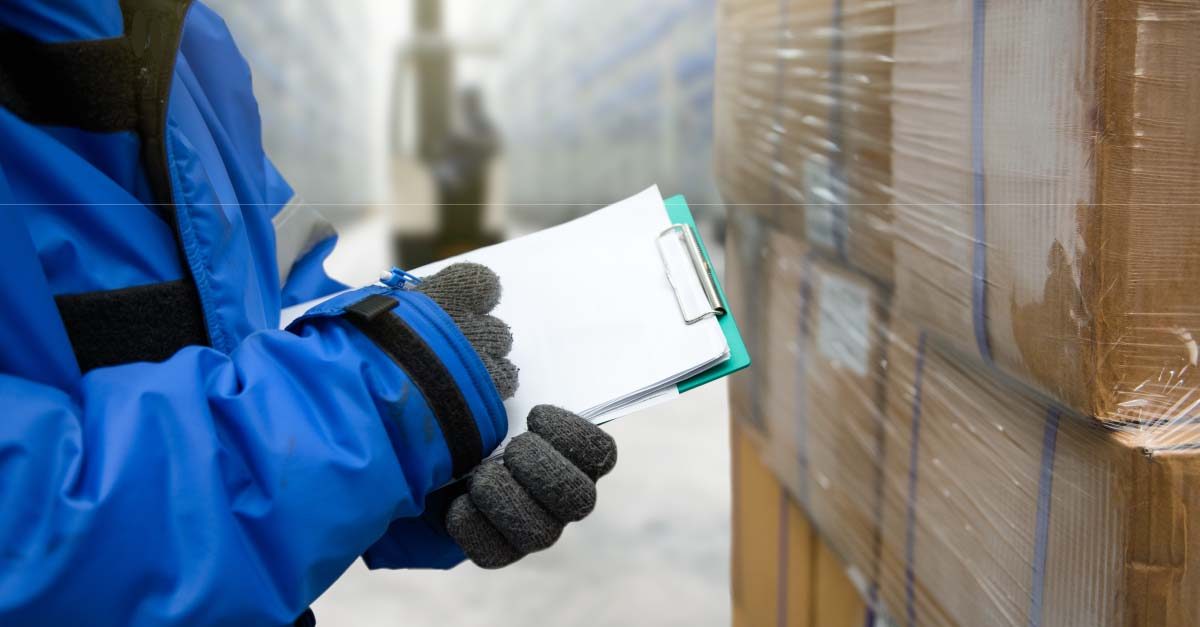Temperature-controlled packaging is a booming business with a market size forecasted to reach more than $8 billion in the next five years. Increasing climate concerns, supply chain pressure, and new technologies mean that many suppliers will have to quickly update their packaging structures.
To make the right choices for your company, you need to know what aspects of temperature-controlled packaging will influence costs and lead to the best outcome for the products being shipped. Below are six key temperature-controlled packaging trends, according to our experts.
1. Sustainability
“Sustainability is the number one topic across multiple industries,” confirms Rick Claar, Martec partner and president. “When you’re talking about cold chain logistics, there are actually several opportunities for sustainable practices. You have the energy requirements for the transportation vehicles, the energy and material requirements of the temperature-controlled packages, and then the maintenance of the product you’re moving.”
While there are many different angles to approach sustainability from, Claar emphasizes that they all need to work together.
“If you’re invested in CO2-efficient transport methods but you’re losing 20% [of each truckload of product] because of inefficient cooling methods, that’s not fully sustainable,” he says.
Maintaining precise temperatures across the entire supply chain while reducing CO2 emissions presents significant challenges. Rising interest in sustainable materials in logistics has contributed toward the increasing availability and adoption of reusable, multi-use, materials-based temperature-controlled packaging solutions.
“Using bio-based, compostable, or biodegradable packaging systems alongside PCM (phase-change material) technology is one of the best ways to transport efficiently while saving maximum product,” Claar suggests.
2. Cost reduction
Any company working with temperature-controlled goods sees regular financial losses when product goes bad or shipping is delayed. Investing in new temperature-controlled packaging technology is a larger expense in the present, but saves significant product and revenue in the future. Right now, it appears the trend is ‘spend more to save more’.
Claar has witnessed these trends firsthand. “Increasing demand for fresh and frozen foods across the world is the primary driver for temperature-controlled packaging solutions market growth,” he suggests. “That means companies are looking at tracking expenses in chiller energy, packaging weight, and vehicle weight to offset this increase in more temperature-dependent shipping.”
The good news for companies looking to lower overall costs is that energy reduction ties into both cost reduction and sustainability. According to Claar, lighter packaging and efficient chillers cut transport time and energy waste so that products are delivered more quickly with less energy usage.
3. High-tech traceability
Implementing RFID (radio frequency identification) tracing technology in shipping containers and pallets is becoming standard in the cold chain industry. Location tracing provides customers peace of mind, but the technology also can track temperature and quality of the products throughout the shipping journey so that adjustments can be made.
“Smart packaging has been around for years,” says Claar, “but it’s definitely becoming more mainstream as the technology becomes more widely available.” Ultimately, Claar notes, RFID tags benefit both the supplier and the receiver. The suppliers can get real-time feedback on how their packaging is working so that they can fix issues, while customers can track product quality to ensure they’re getting the full percentage of what they paid for.
“Over time, I would not be surprised if smart packaging becomes a requirement for shipping partners,” Claar suggests. “If the technology is available and showing significant benefits, it’s going to become hard to ship without traceability.”
4. Medical-grade hygiene
Temperature-controlled packaging market growth is ascending also due to the significant surge in demand from the healthcare and pharmaceutical industry. The urgency for mass delivery of the COVID-19 vaccine opened doors to new innovations in medical-grade hygiene in the shipping industry.
For example, the U.S. Food and Drug Administration (FDA) has specified thermal and hygiene requirements for transportation, handling, and storage of healthcare products including drugs, vaccines, blood, and organs. Additionally, the World Health Organization (WHO) has been emphasizing the reduction of vaccine waste. These initiatives are expected to fuel demand for new temperature-controlled packaging solutions.
Claar notes this will also have an effect on other industries. “Technologies developed to sustain vaccine integrity are now being used for food safety and temperature stability. Food and pharmaceutical transit is being held to a higher standard because of the mass technological production that happened in response to COVID.
“Because the cold chain isn’t fully siloed into pharmaceuticals and food, any advancements in one area are going to flow into the other – and that’s a good thing,” Claar says.
5. Expanding end-use segments
The advanced packaging technologies market is segmented into food, beverages, pharmaceuticals, chemicals, cosmetics, agriculture, and numerous other categories. The food segment alone within the advanced packaging technologies market can be sliced further into about 10 subsegments.
This makes it difficult for individual suppliers to focus equally on each subsegment. When investing in specific technologies, it’s important for suppliers to know which categories, or unmet needs, are on the rise so they can make an informed decision about the right temperature-control solution for their business.
So what’s coming in the future?
“Right now, meal kits and ready-to-eat meals are still upsurging,” says Claar. “Companies like Hello Fresh and Blue Apron are really boosting the segment, and the technologies needed to transport these meals are becoming more advanced.”
How are meal kit companies choosing to transport their products? “The best chiller option at the moment is a slow-ice polymer pack that maintains temperature for 2-3 days of shipment before melting. These are great on a sustainability level because you can put them down the drain and they’re biodegradable. In the future, we’ll probably see more advanced cooling systems that accommodate different foods in each meal needing slightly different temperatures,” notes Claar.
6. Using market research to predict your next packaging move
There isn’t one right choice for every company when it comes to cold chain logistics and temperature-controlled packaging, but market research and marketing consultants can point you in the right direction. Partnering with a consulting firm gives you the insights you need to make informed, strategic decisions.
With over 7,000 successful projects, Martec is ready to support your strategic planning processes. Contact us today for trusted market research and consulting services.




